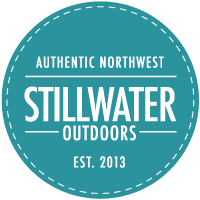Fall is in full-swing and the first frosty morning has come and gone. As our thoughts turn to the holidays, it's easy to forget that there are still many outdoor events on the way. Stillwater Outdoors wants to invite you to participate and join in the fun.

Race to Feed Our Veterans - Meals on Wheels
A 5K event for those who love to run (or walk) and want to help support the local community. Last year, 362 participants brought 375 lbs of food and 58 boxes of instant breakfast. Sponsored by Meals on Wheels, this event starts at the Heritage Funeral Home and starts at 10 AM on Sunday, November 11. Registration is $25 and is still possible (though it's too late to get a t-shirt for the event) through their website:
Cheney Turkey Trot - Cheney High School Cross Country Team
The 11th Annual Cheney Turkey Trot is open for registration ($5) until November 18th. It is a walk/run event (2 mile walk & 3 mile run) taking place on Thanksgiving day, November 22, at 9 AM. They ask that participants bring canned food or a donation for the Cheney Food Bank. For more information or to register, check out their website:
Daniel T. McGinnity Memorial Turkey Trot - Midway Elementary Community
For those who can't make it out to Cheney on Thanksgiving morning, there is also the Daniel T. McGinnity Memorial Turkey Trot, which takes place at the Midway Elementary School in Colbert. It's a 5K run (or walk) with all proceeds going to the Second Harvest Food Bank and the Midway PTO. The race starts at 9 AM on Thanksgiving morning, with registration open until the day of the event. They ask that participants bring canned food for Second Harvest. For more information or to register, check out their website:
Daniel T. McGinnity Memorial Turkey Trot
Fee Free Day! - National Parks
We'd like to offer a friendly reminder that November 11 (Veterans Day) is a fee-free day at all of the National Parks. If you've never visited a National Park, why not participate and get a chance to experience the splendor that our country has to offer? Whether you're going for a day hike, want to join a forest ranger-led event, or simply want to enjoy the scenery, our country's national parks have plenty to offer. Be sure to check out their website to learn more about our national parks or to find a park near you.







